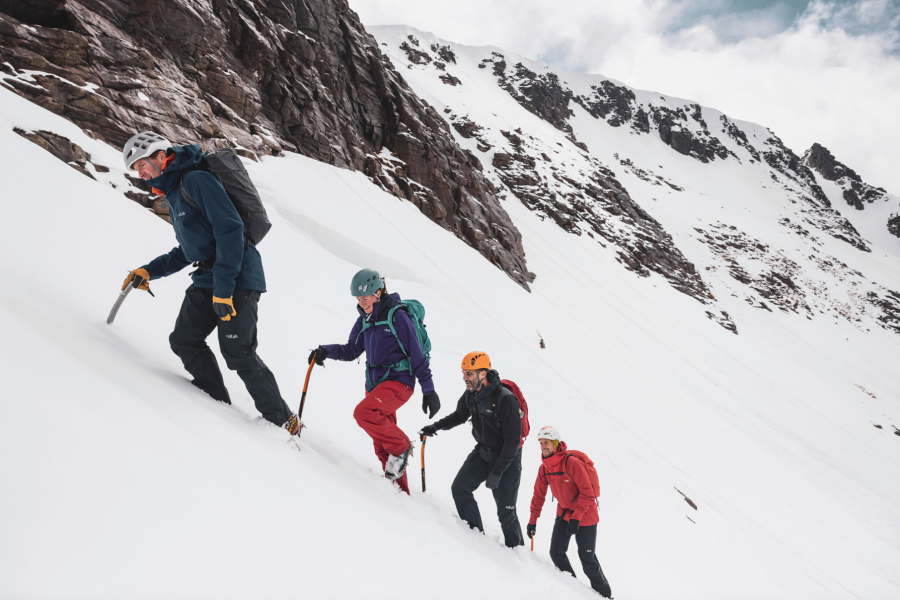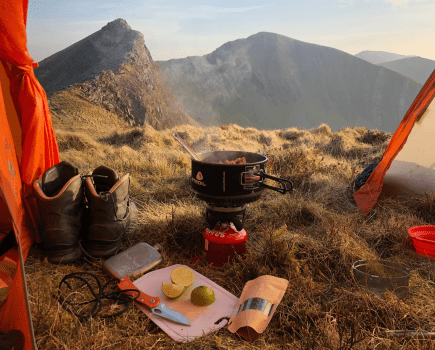Stuart McAleese shares the essential advice you’ll need to take your first step from winter hillwalking into winter mountaineering territory.
Winter in the mountains can inspire us to be ambitious. Snow-covered mountains with gullies and ridges offer unique adventures, with challenges beyond those of winter hillwalking. Here are some key aspects to consider and advice to help you reach new heights as you embark on your first foray into winter mountaineering.
Main image: Working together is essential when winter mountaineering | Credit: Ed Smith
Preparation
Pre-winter is a great time to get inspired and build your fitness for big days out. Guidebooks and big coffee table books, blogs and social media, word of mouth and suggestions or advice from locals and friends can be great for getting input on potential routes you might want to achieve. Keep an eye on local mountain blogs and forecasts; they can be inspiring, and educational, allowing you to see conditions developing as the season progresses.
Winter mountaineering terrain requires some additional skills beyond those you’ll have acquired for winter hillwalking. You’ll need some winter climbing technique and simple ropework, so any time spent in the climbing wall even bouldering will be valuable not just for fitness and technique, but also for ropework and belaying practice too.
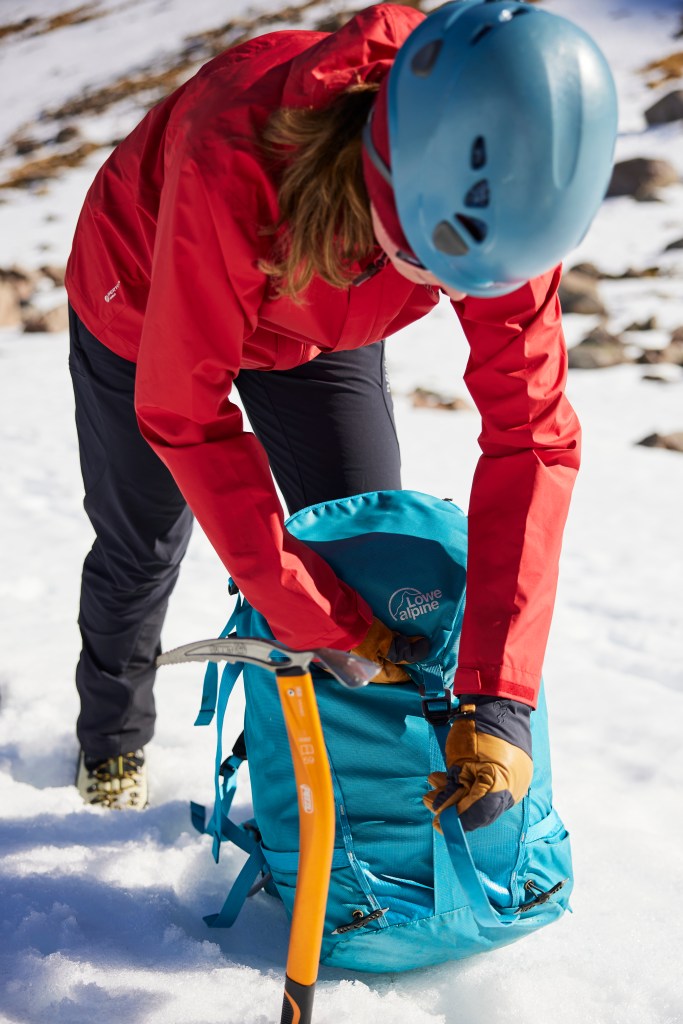
A helmet is a key part of kit. Credit: Ed Smith
Equipment
This doesn’t have to be very different from your winter walking as it can be expensive to change everything. The terrain and perhaps snow will be steeper and if attempting a rocky or mixed ridge, you can expect simple scrambling through and over rock steps. Your clothing needs to be durable and well-fitting to be suitable for climbing over rocks and steep snow while wearing crampons.
You’ll need to consider using 12-point steel crampons, as these are stronger and more effective in mixed terrain and for front pointing up steep snow, as found in gullies. A slightly shorter ice axe is easier and again more effective to use in mountaineering terrain when compared with a longer walking axe. You will need a helmet too; it’s not just best practice, but essential when in steeper terrain with potential hazards above you.
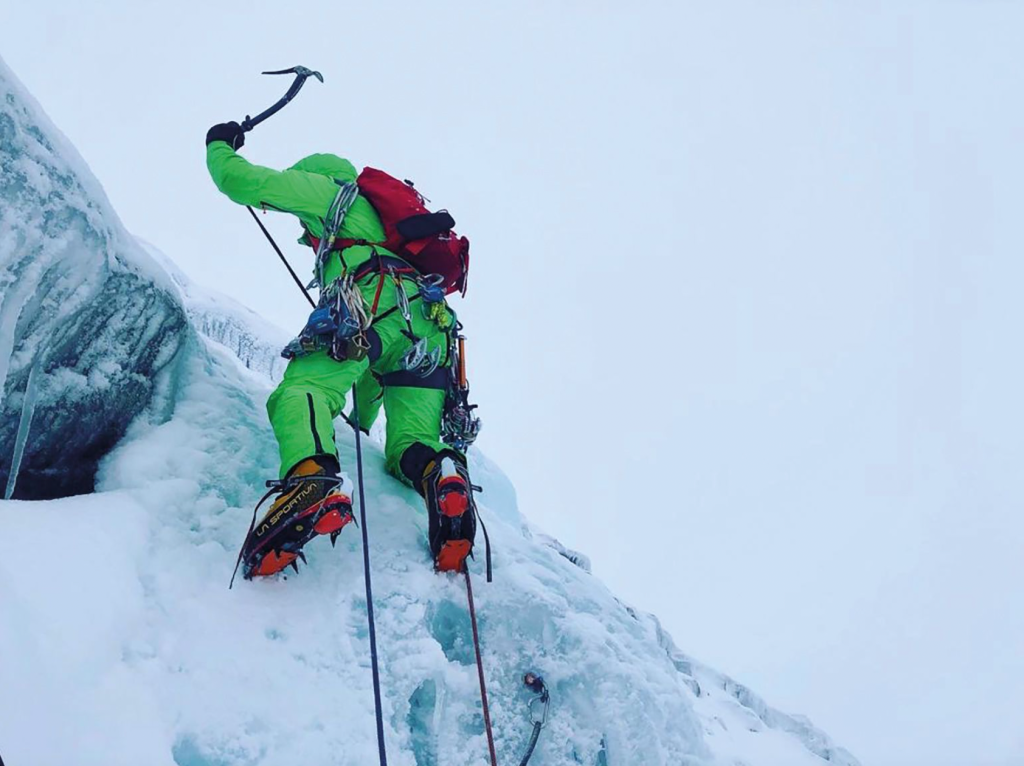
Ice climbing at Hells Lum, Cairngorms. Credit: Stuart McAleese
Weather and avalanche risk
As we all know the weather in winter can be tricky to get right, which contributes to the challenge and interest. Weather and conditions can make operating difficult, so build up gradually to handling more challenging weather and be prepared to turn around if it gets too much.
Winter mountaineering routes will be on the steeper more complex parts of the mountains such as gullies, steep snow faces and ridges. When snow accumulates in these areas there can be greater avalanche risk. Ridges can be relatively safer, as a gully feature will collect snow and sometimes cornice too, whereas a ridge will typically collect less snow. The important thing is to choose a route that is suitable for the conditions of the day, and the experience level of everyone in your group. Always use the Scottish Avalanche Information Service when planning your days, and monitor it throughout the season.
Be prepared to modify your plans and adapt to the weather and conditions you are faced with and be patient, as you may have to wait for the right conditions. Gully and snow climbs need good build up of snow and ice for them to be climbable, safe and reflect their grade. This will take time and can be monitored through the early season. You might be tempted to force a day and climb something not in good condition, but this can be unsafe and make the route way harder that it should be. Monitor local blogs, social media posts, word of mouth and consider asking advice from friends or experts in the area too.
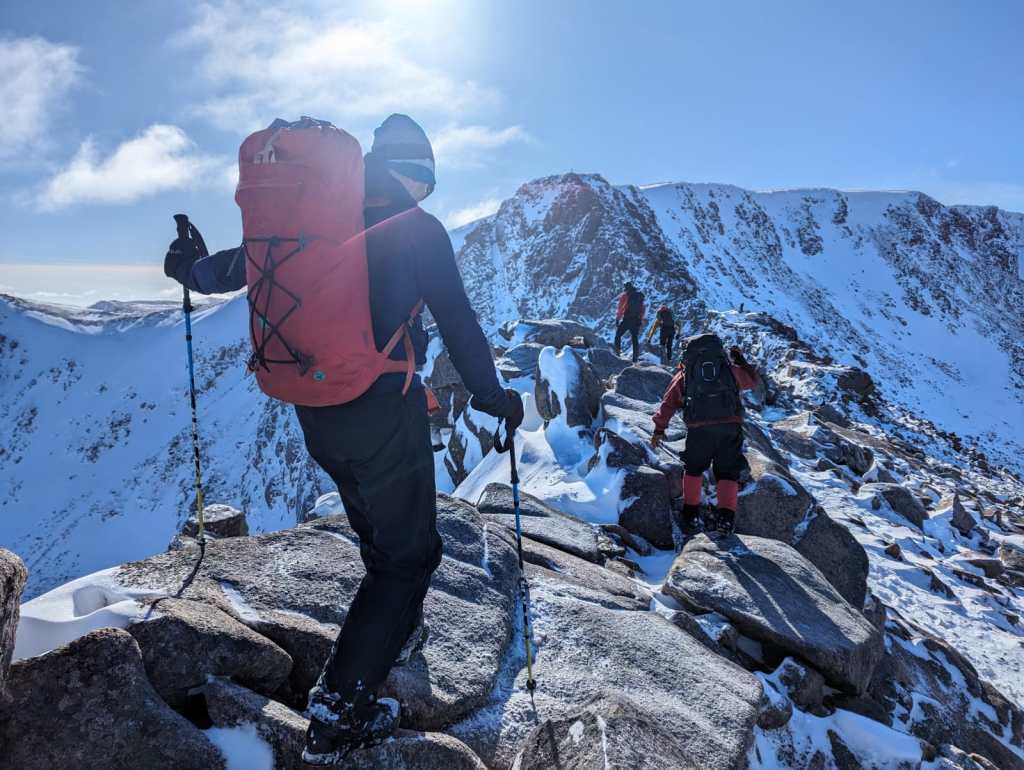
Ridges can offer safer routes after snowfall. Credit: Louise Tully
Who should I go with?
I would recommend going winter mountaineering in a team or with a friend, maybe as part of a club, or someone you climb with regularly. It’s important that aspirations and ambitions match, and that you’re comfortable with each other. Depending on the route, you may end up in a roped climbing situation; try and keep the team size to a climbing team of two or maximum three. This will ensure that your use of the rope is safe, efficient, and effective.
Navigation and route finding
Mountaineering routes may take you into steeper more complex terrain with greater consequences, which is why it’s important you continue to develop your navigation skills so they’re up to scratch. Digital mapping apps and GPS can be incredibly useful, but the core skills of using a physical map and compass are essential, particularly given the limitations of technology in the winter mountain environment, where screens can be difficult to use and batteries may not withstand the cold.
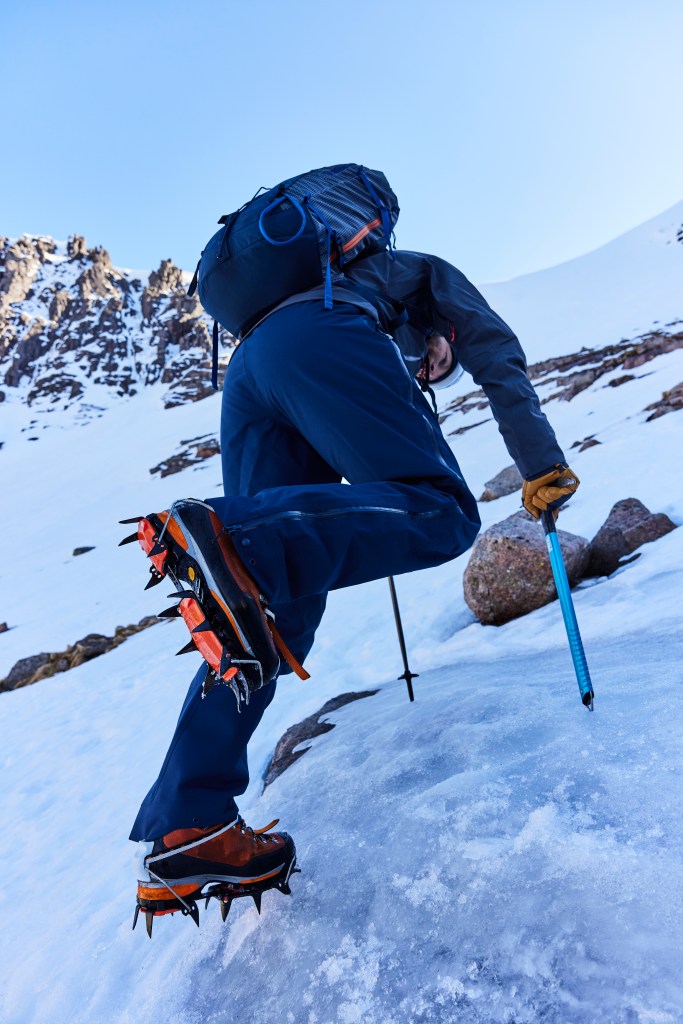
Winter mountaineering requires you to keep honing your skills each season. Credit: Ed Smith
Route finding is an important skill to develop alongside navigation. Guidebooks are becoming more accessible and are useful sources of information. However, they, or other sources such as online blogs, may not contain every single detail of your mountaineering route. It’s equally important you develop the ability to judge terrain and likely direction a route would follow. This takes time and experience, and you can learn together by sharing route finding decisions in your team.
Build your experience and skills gradually, prepare and work together with your climbing team or partner, learning along the way from your winter mountaineering experiences. It’s an exciting time of year to start training and planning for your winter adventures, which can always be interesting, wild, and memorable.
Glenmore Lodge is sportscotland’s National Outdoor Training Centre. Based near Aviemore in the Cairngorms National Park and founded in 1948, it exists to support individuals to access the outdoors safely and responsibly through providing skills training and inspiring adventure. Whether it’s trying a new way to enjoy the outdoors, a guided adventure, or professional experienced Instructors are ready to support everyone to develop their skills and achieve their aspirations in the outdoors. Learn more at glenmorelodge.org.uk.

